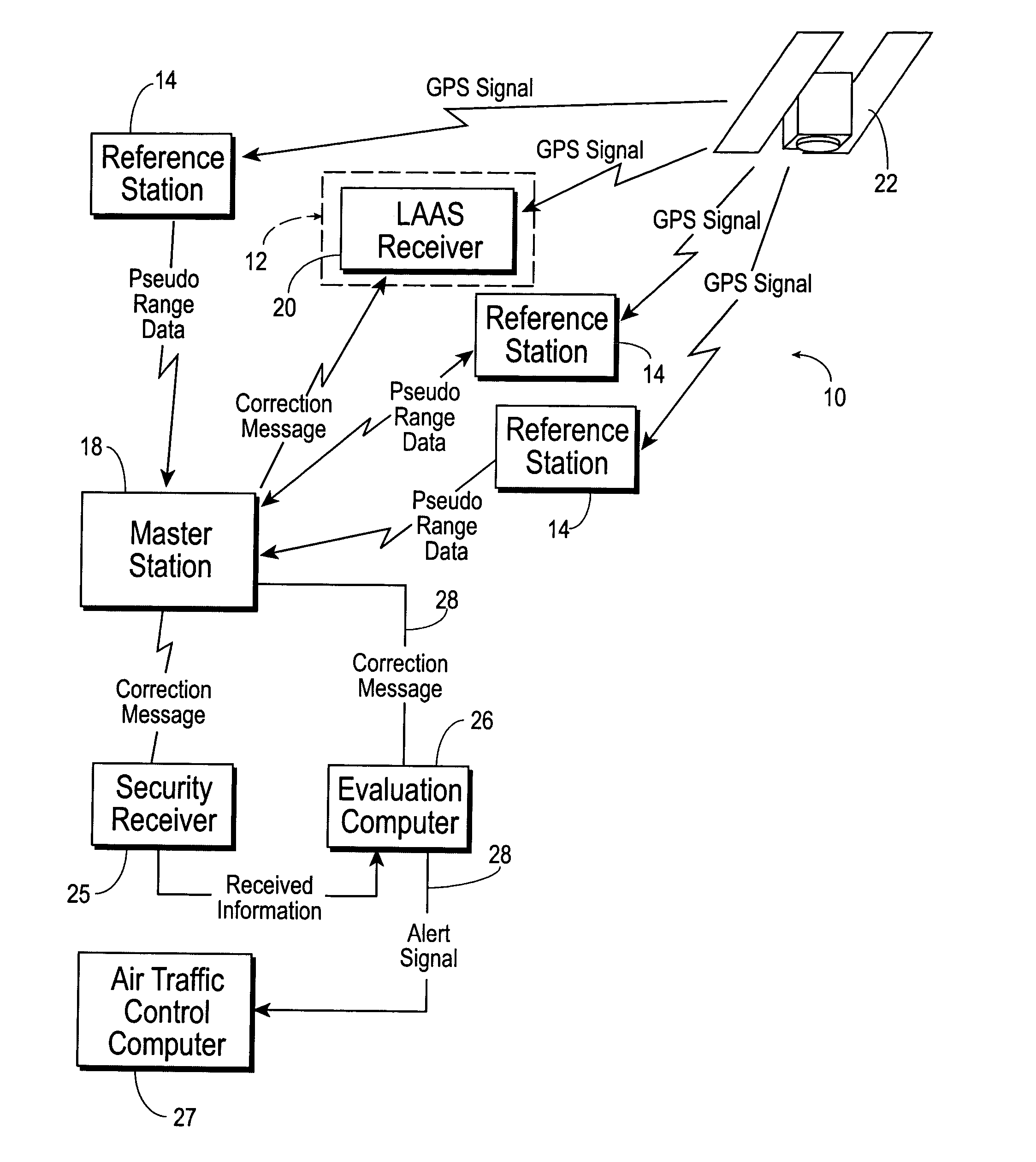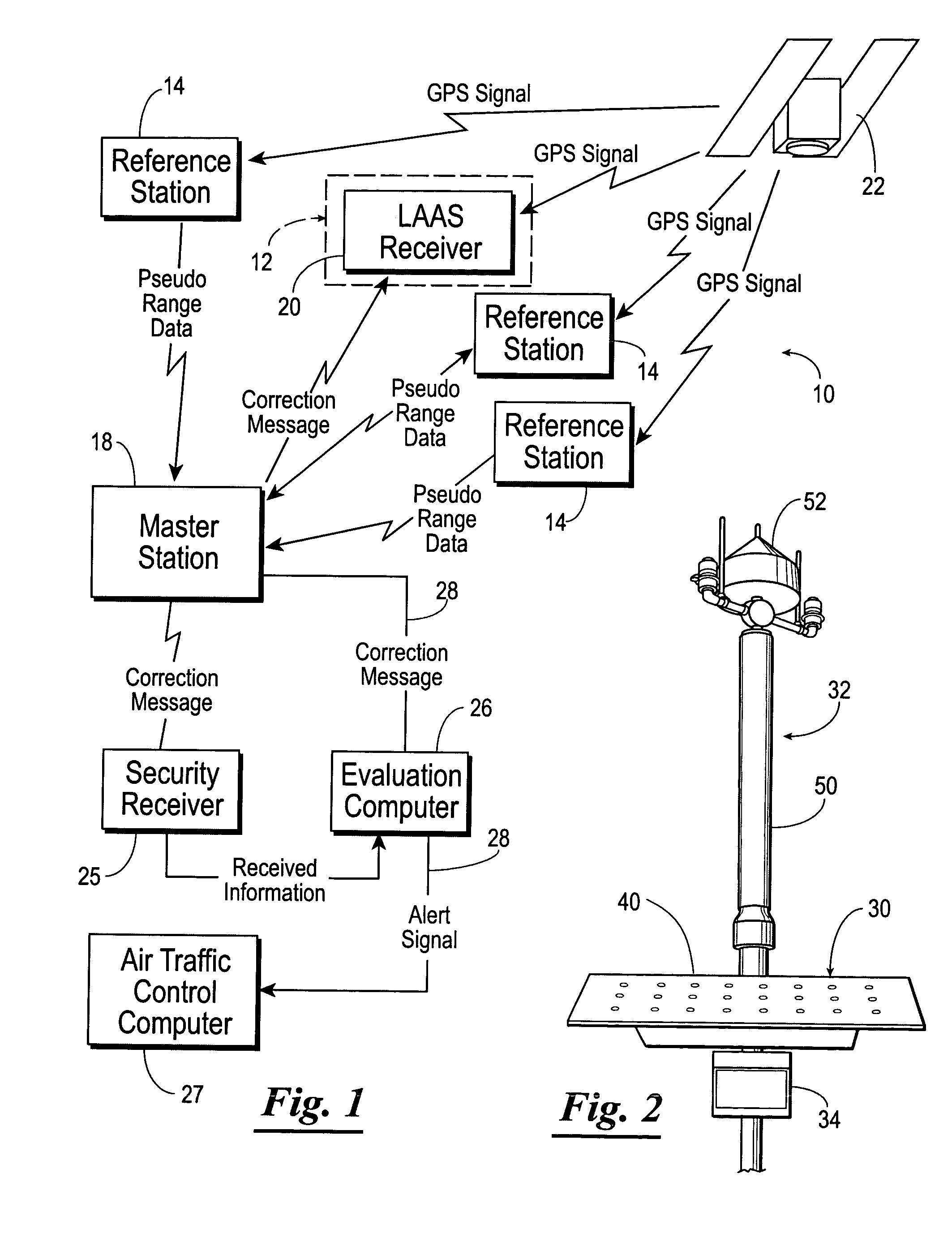Navigation system using locally augmented GPS
a local augmented and navigation system technology, applied in the field of navigation systems using local augmented gps, can solve the problems of inability to accurately calculate the position, high cost of purchasing and maintaining a complete aircraft navigation system, and complex structure,
- Summary
- Abstract
- Description
- Claims
- Application Information
AI Technical Summary
Benefits of technology
Problems solved by technology
Method used
Image
Examples
Embodiment Construction
[0042] Referring now to FIG. 1, shown therein and designated by a reference numeral 10 is a navigation system constructed in accordance with the present invention. The navigation system 10 uses locally augmented GPS and does not require significant support infrastructure, such as power and communication lines. Although the navigation system 10 is described herein as a navigation system for an airport landing system, it should be understood that the navigation system 10 can be used for other types of navigation, such as nautical navigation, vehicular navigation or navigation of robots or other types of equipment or machinery. For example, the navigation system 10 can be used for navigating barges or other types of ships. The navigation system 10 is especially useful in high-volume traffic areas.
[0043] Set forth hereinafter is one specific embodiment of the present invention. However, it should be understood that the present invention is not limited to this specific embodiment. The na...
PUM
 Login to View More
Login to View More Abstract
Description
Claims
Application Information
 Login to View More
Login to View More - R&D
- Intellectual Property
- Life Sciences
- Materials
- Tech Scout
- Unparalleled Data Quality
- Higher Quality Content
- 60% Fewer Hallucinations
Browse by: Latest US Patents, China's latest patents, Technical Efficacy Thesaurus, Application Domain, Technology Topic, Popular Technical Reports.
© 2025 PatSnap. All rights reserved.Legal|Privacy policy|Modern Slavery Act Transparency Statement|Sitemap|About US| Contact US: help@patsnap.com



